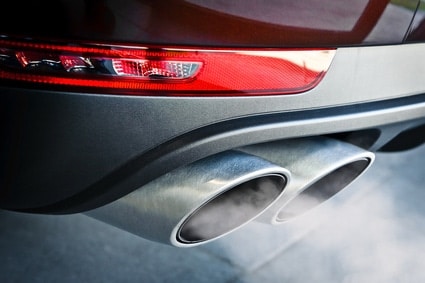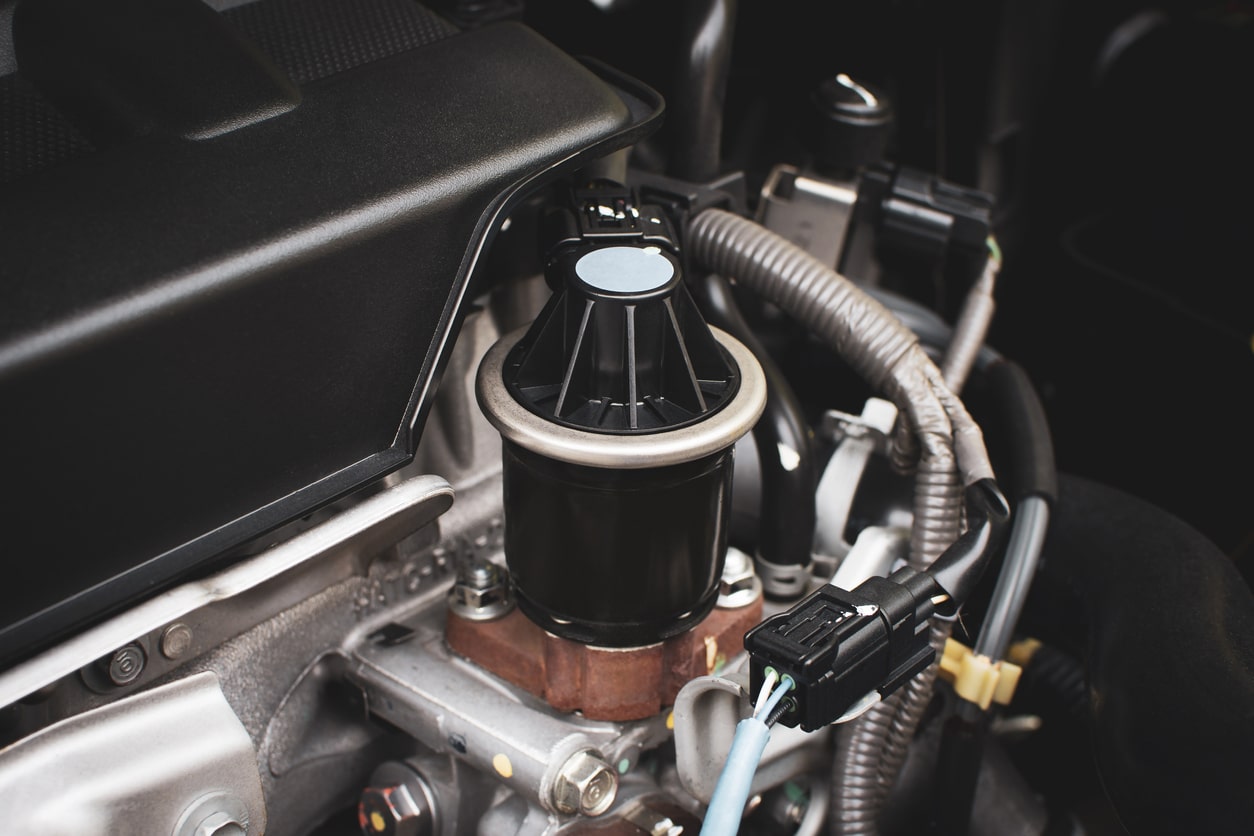Having already covered how to troubleshoot braking and starting issues as part of our ‘Problem Solved’ series, today on the Holts blog we’ll be looking at how to identify, detect and fixing exhaust problems.
- Loud, Sporty Sound When Accelerating
- Hissing Noise when Idling
- Chugging Noise when Idling
- Rattling Noise when Idling
- How to Carry Out a Visual Check
Given their location on the underside of the car, exhaust systems are susceptible to wear and tear, but nothing causes more damage than internal rust! due to the amount of acidic moisture and other debris passing beneath the vehicle. Water vapour is formed as a by-product in the engine and exits the exhaust along with gases such as CO2, exit the exhaust. The water can condense on cooler surfaces in the exhaust system and over time this collects and corrodes the inside to form small holes. The exhaust is also suspended under the vehicle, allowing it a small amount of movement.
The combination of movement and corrosion can cause cracks and large holes at weakest points. The first you may know of it is a loud rasp or ‘sporty’ sound, but soon you could be looking back at your back box through the rear view mirror! Luckily, most exhaust problems can be diagnosed simply by listening out for unfamiliar noises, or else with a visual check under the car.
Here we provide some of the signs and symptoms to look out for when diagnosing faults and problems with the exhaust.
Loud, Sporty Sound When Accelerating
A loud exhaust normally means a hole in either a pipe or a silencer box. Most commonly found from the middle to the rear of the car, these holes can usually be quite easy to find. Check the joints where pipes join boxes or bends. The surrounding area will have a film of carbon ‘soot’ where the exhaust gases are escaping and you may also be able to hear exactly where the sound is loudest.
In most instances, Holts Gun Gum can permanently seal the holes or crack and help extend the life of your exhaust. Simply apply the Gun Gum paste directly from the tin and allow it to harden through time or by running the vehicle at idle.
Hissing Noise when Idling
Do you notice a hissing noise coming from near the front of the vehicle (rear of engine) when leaving the car to idle? If so, there could be a crack in the exhaust manifold. Depending on the severity, a cracked manifold could make the vehicle un-drivable. Small cracks or holes can be repaired using Firegum paste. Simply apply and leave to dry – use a hairdryer or heat gun on low to speed up the process.
Chugging Noise when Idling
While a chugging noise could indicate other underlying engine issues, it could also mean there’s a blockage in the exhaust system — particularly the catalytic converter or DPF on newer diesel models. If left unchecked, this blockage could lead to a significant drop in engine performance, so it’s a good idea to get the system serviced as quickly as possible.
Noise or Smell Coming from the Exhaust
If there is more noise coming from the exhaust of your car, or if you notice an excessive smell caused by non-CO gases, then it could be a sign of a damaged exhaust silencer. Damage to the silencer can be caused by several factors such as corrosion, general wear and tear or excessive driving (such as over speed humps). An exhaust silencer repair can be anything from a hole to an assembly repair but the problem needs to be corrected as soon as possible.
Rattling Noise when Idling
The exhaust system is suspended under the car with a number of brackets, clamps and mountings, which can themselves rust and give way. If you hear a rattle under the car when it’s idling or at low revs, it may require an exhaust bracket repair due to becoming detached through a failed hanger. If you can find a way to safely get underneath the vehicle, replacing the appropriate hanger to secure the exhaust should be a simple enough task.
How to Carry Out a Visual Check
While it’s possible to diagnose a number of exhaust problems based on different engine sounds, a visual inspection of the exhaust is much more reliable way of assessing the condition of the entire system — from the manifold to the tailpipe.
To inspect the exhaust system effectively, you’ll need to get underneath the car — something easier said than done for DIY car enthusiasts without a lift or a pit at hand. It is possible to buy specialist ramps that allow you to raise the car enough to get under and inspect the exhaust system; just make sure the ones you buy are suitable for the weight of your vehicle.
When carrying out a visual inspection of the exhaust, pay close attention to seams and joints where components meet, as these are most prone to cracks and leaks. If the exhaust is rusted, use a screwdriver to gently prod the affected area to check its condition. Often, rust spots look worse than they appear, and it may be that the component hasn’t worn through yet.
Make a mental note of any rust spots, and remember to check the areas again in a few months or so. If a rust patch seems very thin and weak, or if there’s a hole, try using Holts Gun Gum before forking out for a new part. When Gun Gum paste is used in conjunction with other products in the range, in most instances the repair will outlast the rest of the system.
To fix holes and cracks in your exhaust at home, check out the range of pastes and bandages from Holts.


